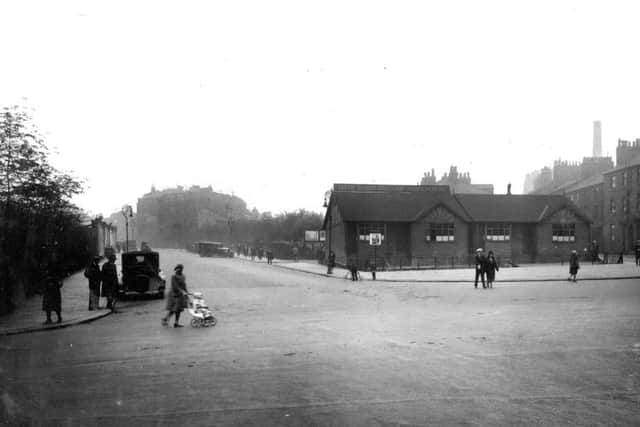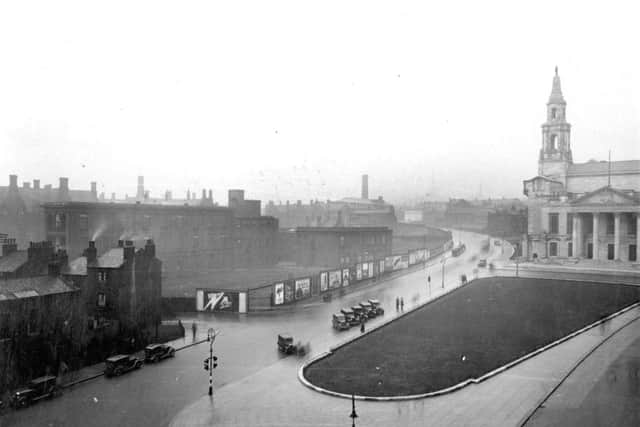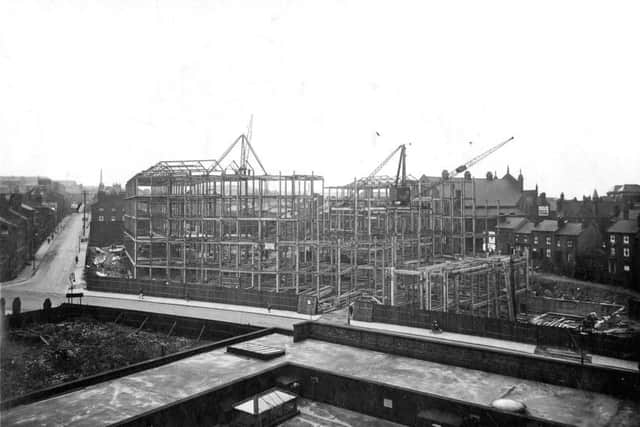Nostalgia on Tuesday: Age of Civic Pride


Featured this time is a city thoroughfare that was extended – Calverley Street. Once the work was completed, the street accommodated a number of well-known public buildings and is conveniently used daily by countless people.
On Wednesday June 5, 1912, the Yorkshire Evening Post ran a story with three headlines: Leeds Memorial to the Late King; Infirmary Extension Scheme which will Provide 288 Additional Beds; and New Main Thoroughfare Suggested.
Advertisement
Hide AdAdvertisement
Hide AdA plan of the proposed new main thoroughfare illustrated how Calverley Street, at this time only extending between The Headrow and Great George Street, would be considerably extended through to Fenton Street. This would involve scything northwards though a number of properties on Great Portland Street, St James Street and Sunny Bank Street, as well as affecting a number of other buildings.


On that Wednesday a deputation from Leeds General Infirmary met with Leeds City Council members and suggested how a most important street improvement might be carried out while the infirmary authorities were making extensive additions to that institution.
Leeds Infirmary was built to the Gothic Revival style designs of George Gilbert Scott in 1868 and another wing was added by George Corson in 1892. In 1911 the public was asked to subscribe £130,000 for further a development and this was to be a memorial to the late King Edward.
Thus it was argued that if Leeds Corporation cleared a lot of the old property in the neighbourhood of the Great George Street side of the Town Hall and construct a 60-feet wide road linking Calverley Street with Fenton Street, a wonderful transformation would be wrought at the very hub of Leeds. It was estimated that the complete improvement scheme (apart from the infirmary extension) would cost the corporation about £129,000.
Advertisement
Hide AdAdvertisement
Hide AdThe new main artery was projected to give direct communication from the Great Northern and Lancashire & Yorkshire railway station to Woodhouse Lane. The gradient would be much easier than that of Cookridge Street, from where the new street would divert much of the traffic currently causing congestion.


During January 1913 , proposals for more street improvements around the city, including the new Calverley Street extension, were met with noisy opposition at a council meeting, but once the uproar had subsided a little the Mayor said forcefully: ‘I declare it was passed’.
Clearing away property for the infirmary and Calverley Street extensions was well under way by May of the following year.
By October, 1914 the Leeds Mercury said the ‘splendid new thoroughfare’ was nearly finished. It was almost passable for road traffic, and one footpath was finished.
Advertisement
Hide AdAdvertisement
Hide AdNearing completion by early 1917 was the addition to the hospital, named the King Edward Memorial extension. At the hospital’s annual meeting in March 1917 it was stated that it the heating should be completed within three months and then the whole extensions would be finished.


Existing for a period at the eastern end of the Calverley Street/Great George Street corner was a single-storey structure with a sign above ‘Ladies Babies Welcome Association’. Beginning as a charitable and benevolent fund, this group provided areas where mothers could seek advice on childcare.
Calverley Street began to take on the appearance we know today when the Civic Hall was constructed to the designs of E. Vincent Harris in 1933 (1876-1971) after he had won a competition staged in 1926. He also provided designs for a number of other important buildings around the UK, among them the Board of Trade, Whitehall; Sheffield City Hall; and Manchester Central Library.
Leeds Civic Hall was estimated to cost about £360,000 and the corporation proceeded it on the understanding that the Unemployment Grants Committee would contribute 75 per cent to labour costs. The building contract was awarded to Armitage & Hodgson of Leeds, which had carried out many important constructional contracts in the city, including the university and the new Devonshire Hall.
Advertisement
Hide AdAdvertisement
Hide AdA prestigious opening ceremony was undertaken by King George and Queen Mary on August 23, 1933. Many thousands gathered hours before the King and Queen were due to arrive and it later became apparent that the crowd was one of the biggest in the history of the city.


The building’s magnificent accommodation includes the Mayor’s ceremonial rooms, council chamber, committee rooms and offices.
Many ceremonies and celebrations have taken place there and the building has hosted a number of prominent guests, amongst them the former South African President Nelson Mandela on April 30, 2001.
On the opposite side to the Civic Hall a further extensive addition to the hospital – the Brotherton Wing – was opened at a cost of about £250,000 on November 14, 1940. Charles Frederick Ratcliff Brotherton was the benefactor for the extension built in Portland Stone at a cost of £50,000. Semi circular open balconies at the end were designed for patients to get fresh air.
Advertisement
Hide AdAdvertisement
Hide AdCalverley Street presently provides an access point to Millennium Square, which was one of Leeds’s main projects to mark the year 2000. Since then, the Square has become a focal point for major events in the city centre.
Thanks to Leeds Library for the use of the photographs